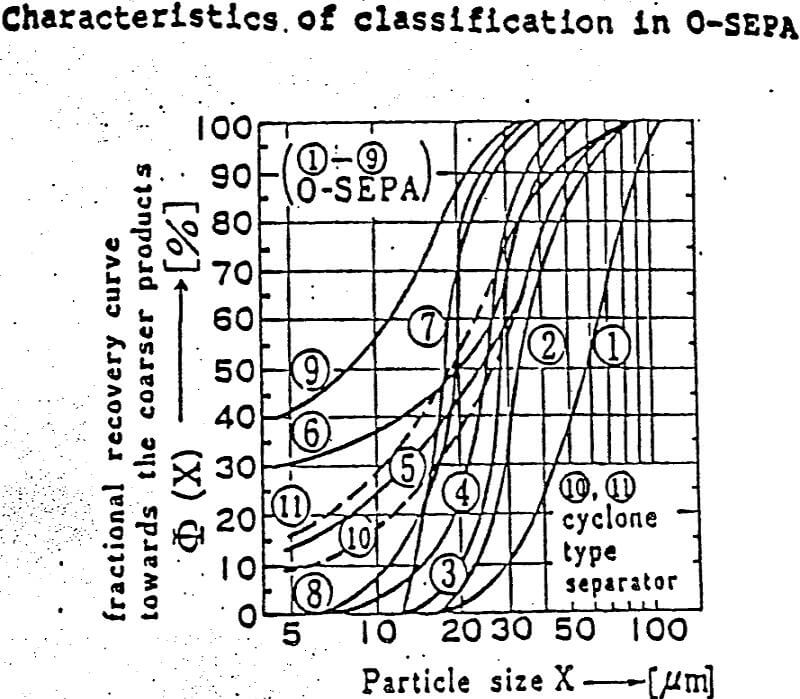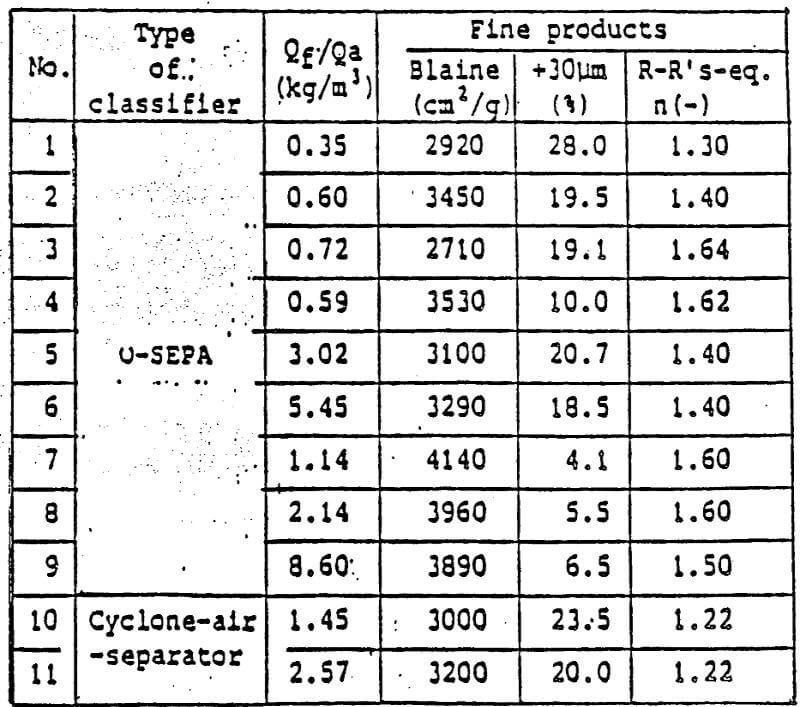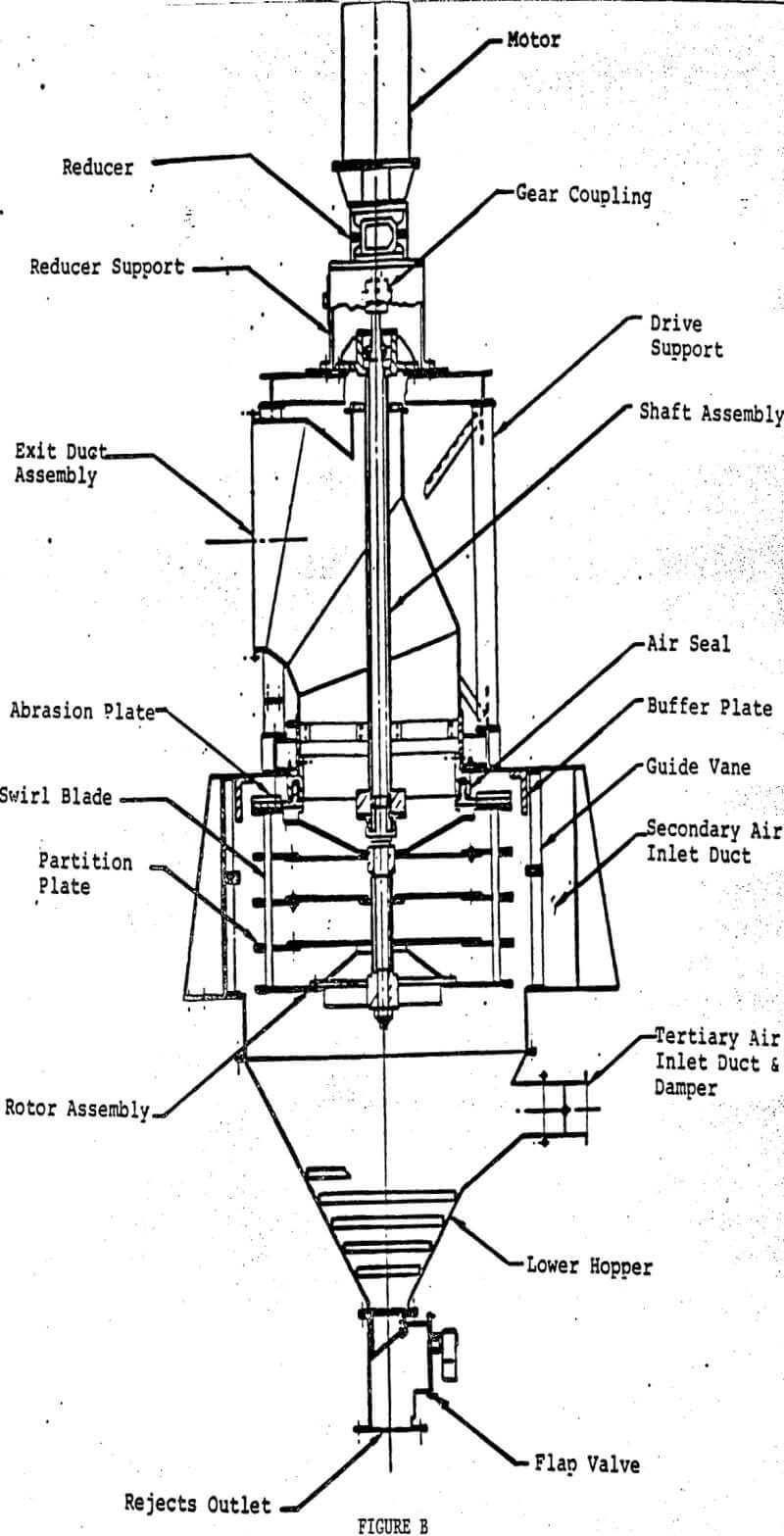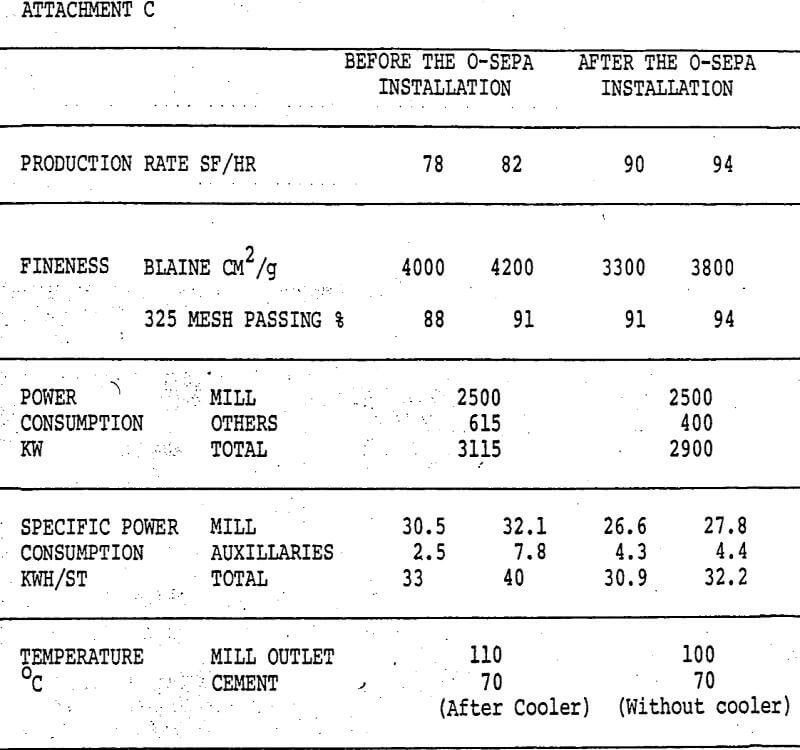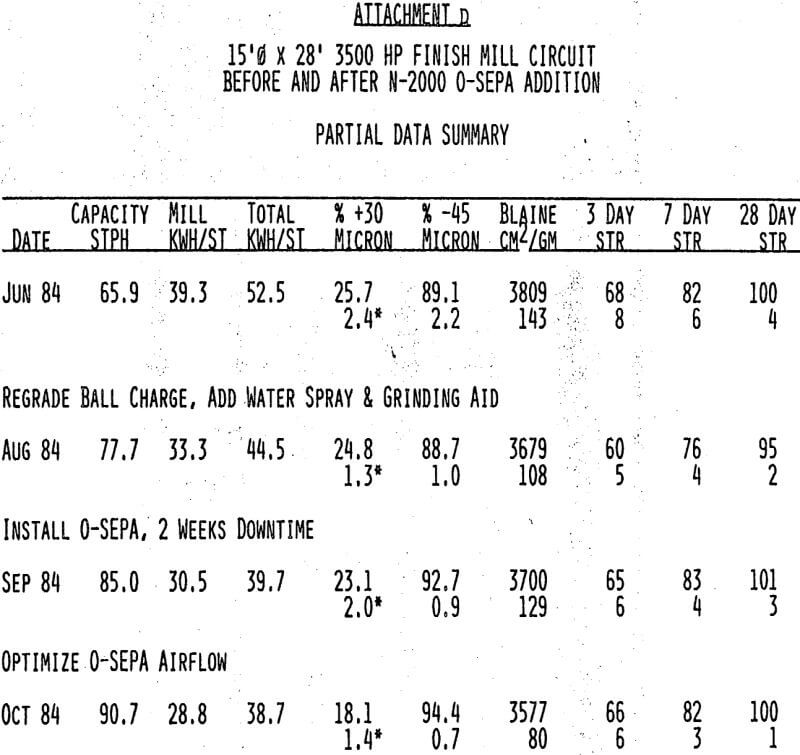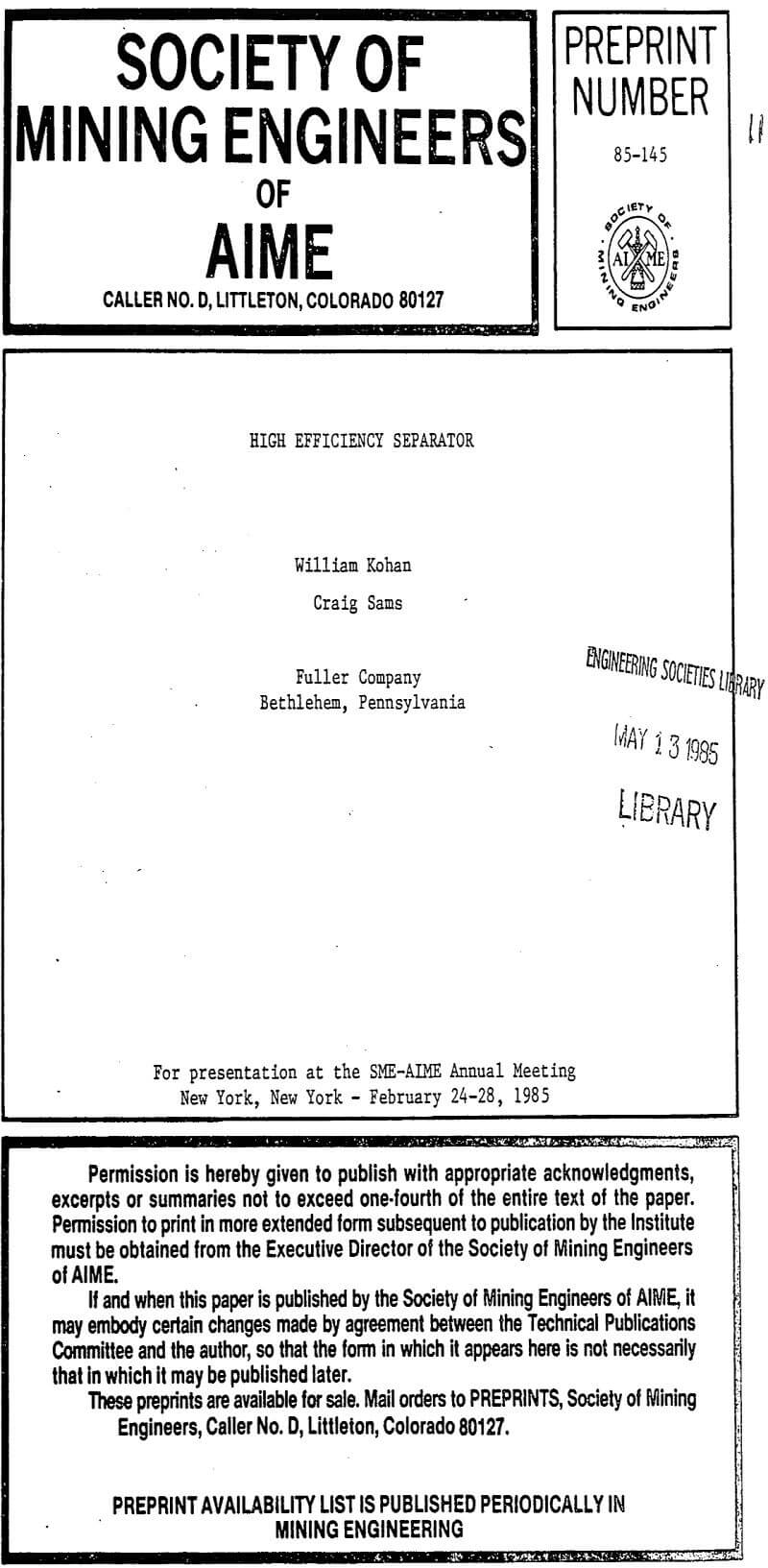The industrial grinding process has undergone changes to better address the market and economic needs. Fine grinding of dry materials has developed to the point where classifying linings and fine ball charges improve mill efficiencies. Roller mills as well have wide acceptance due to their power efficiencies. The mill, by its nature, cannot provide the specific particle size or range of sizes which are required for further processing or final use.
Therefore, various separators are operated in conjunction with the mill to control particle size. The sizing device helps minimize over grinding and control top size. Rising energy costs combined with increasingly tighter quality specifications have led to increasing study of the grinding and separation process.
Measurements of separator efficiency based on total particle size distribution of feed, rejects and product are termed the tromp curve method. This relates the mass of material by particle sizes returning to the mill as a percentage of that particle size entering the separator. Attachement A compares typical tromp curves for conventional separators to the performance of the new O-SEPA separator.
The first commercially sized unit in Japan was made completely of mild steel. This was done to quickly find the wear areas. The knowledge gained resulted in lining the outer casing with ceramic tiles, spray ceramic coatings on the outer diameter of the partion plates, ceramic tiles on the rotor drive shaft and outer diameter of the outlet duct. The first separator lined in this manner has now been in operation for 5 years. To date, no parts have required replacement or have shown any significant wear.
